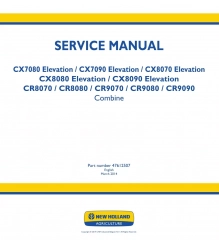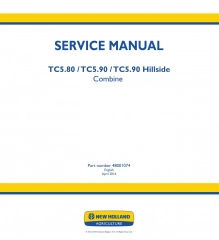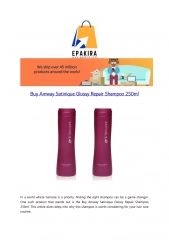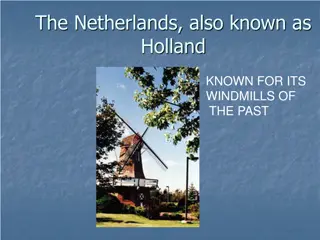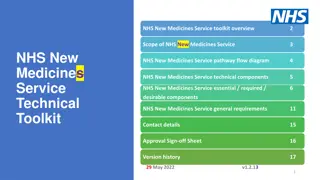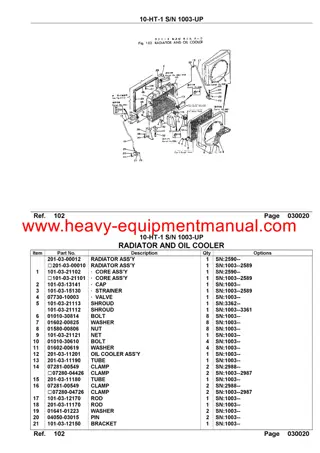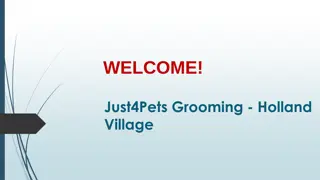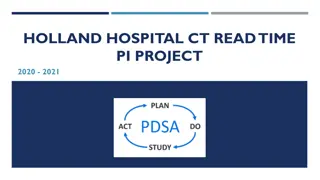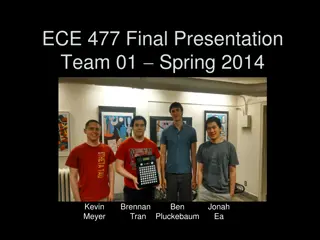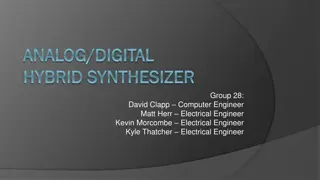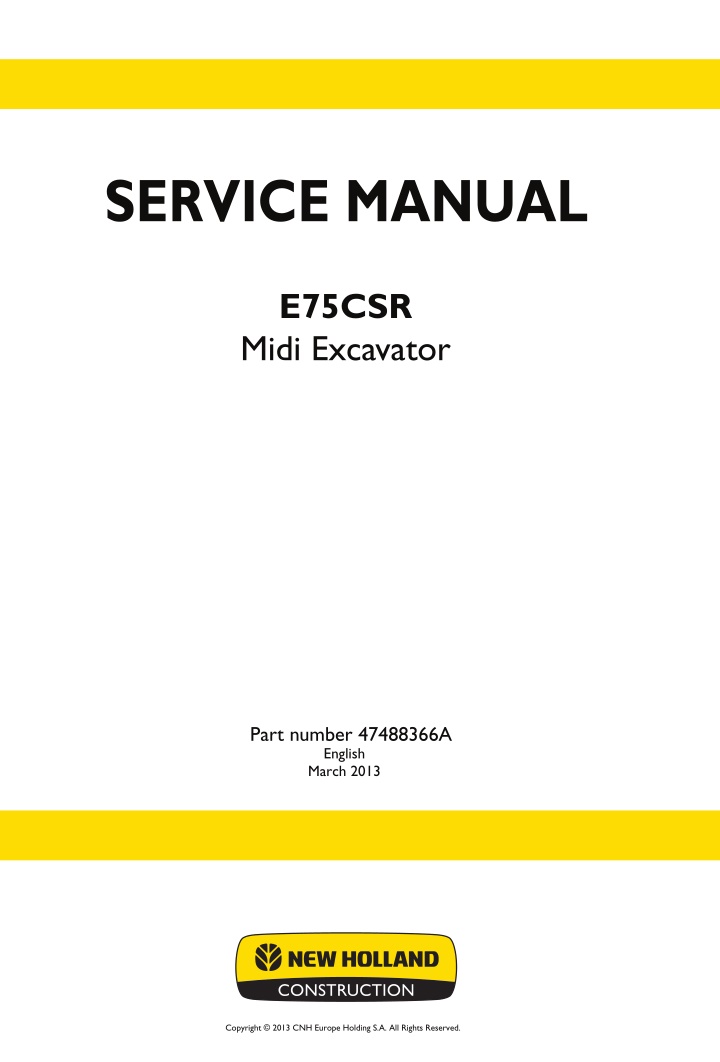
New Holland E75CSR Midi Excavator Service Repair Manual Instant Download
New Holland E75CSR Midi Excavator Service Repair Manual Instant Download
Download Presentation

Please find below an Image/Link to download the presentation.
The content on the website is provided AS IS for your information and personal use only. It may not be sold, licensed, or shared on other websites without obtaining consent from the author. If you encounter any issues during the download, it is possible that the publisher has removed the file from their server.
You are allowed to download the files provided on this website for personal or commercial use, subject to the condition that they are used lawfully. All files are the property of their respective owners.
The content on the website is provided AS IS for your information and personal use only. It may not be sold, licensed, or shared on other websites without obtaining consent from the author.
E N D
Presentation Transcript
SERVICE MANUAL SERVICE MANUAL E75CSR Midi Excavator E75CSR Midi Excavator 1/2 Part number 47488366A Part number 47488366A English March 2013 Copyright 2013 CNH Europe Holding S.A. All Rights Reserved.
SERVICE MANUAL E75CSR 47488366A 13/03/2013 EN
Contents INTRODUCTION Engine....................................................................................... 10 [10.001] Engine and crankcase ............................................................. 10.1 [10.216] Fuel tanks .......................................................................... 10.2 [10.202] Air cleaners and lines .............................................................. 10.3 [10.254] Intake and exhaust manifolds and muffler ......................................... 10.4 [10.400] Engine cooling system ............................................................. 10.5 Hydraulic systems....................................................................... 35 [35.000] Hydraulic systems.................................................................. 35.1 [35.300] Reservoir, cooler, and filters........................................................ 35.2 [35.106] Variable displacement pump ....................................................... 35.3 [35.102] Pump control valves................................................................ 35.4 [35.304] Combination pump units ........................................................... 35.5 [35.359] Main control valve.................................................................. 35.6 [35.355] Hydraulic hand control ............................................................. 35.7 [35.356] Hydraulic foot control............................................................... 35.8 [35.352] Hydraulic swing system ............................................................ 35.9 [35.353] Hydraulic travel system .......................................................... 35.10 [35.354] Hydraulic central joint ............................................................ 35.11 [35.736] Boom hydraulic system .......................................................... 35.12 [35.737] Dipper hydraulic system.......................................................... 35.13 [35.738] Excavator and backhoe bucket hydraulic system................................ 35.14 [35.741] Dozer blade cylinders ............................................................ 35.15 Frames and ballasting................................................................. 39 [39.101] Upper frame........................................................................ 39.1 [39.103] Swing ring assembly ............................................................... 39.2 [39.140] Ballasts and supports .............................................................. 39.3 47488366A 13/03/2013
https://www.ebooklibonline.com Hello dear friend! Thank you very much for reading. Enter the link into your browser. The full manual is available for immediate download. https://www.ebooklibonline.com
Tracks and track suspension........................................................ 48 [48.130] Track frame and driving wheels.................................................... 48.1 [48.100] Tracks .............................................................................. 48.2 [48.134] Track tension units ................................................................. 48.3 [48.138] Track rollers ........................................................................ 48.4 Cab climate control..................................................................... 50 [50.200] Air conditioning..................................................................... 50.1 Electrical systems....................................................................... 55 [55.000] Electrical system ................................................................... 55.1 [55.100] Harnesses and connectors......................................................... 55.2 [55.015] Engine control system.............................................................. 55.3 [55.201] Engine starting system............................................................. 55.4 [55.302] Battery.............................................................................. 55.5 [55.011] Fuel tank system ................................................................... 55.6 [55.640] Electronic modules................................................................. 55.7 [55.512] Cab controls........................................................................ 55.8 [55.036] Hydraulic system control ........................................................... 55.9 [55.051] Cab Heating, Ventilation, and Air-Conditioning (HVAC) controls................. 55.10 [55.404] External lighting .................................................................. 55.11 [55.510] Cab or platform harnesses and connectors...................................... 55.12 [55.408] Warning indicators, alarms, and instruments .................................... 55.13 Booms, dippers, and buckets ....................................................... 84 [84.910] Boom............................................................................... 84.1 [84.912] Dipper arm ......................................................................... 84.2 [84.100] Bucket.............................................................................. 84.3 Dozer blade and arm................................................................... 86 [86.110] Dozer blade ........................................................................ 86.1 Platform, cab, bodywork, and decals............................................. 90 47488366A 13/03/2013
[90.150] Cab................................................................................. 90.1 [90.160] Cab interior trim and panels........................................................ 90.2 [90.120] Mechanically-adjusted operator seat............................................... 90.3 [90.105] Machine shields and guards ....................................................... 90.4 [90.116] Fenders and guards................................................................ 90.5 47488366A 13/03/2013
INTRODUCTION 47488366A 13/03/2013 1
INTRODUCTION International symbols Introduction Although this manual uses the SI units system. Outline of SI units system is described here. Given here in under are an excerpt of the units that are related to this manual : 1. Etymology of SI Units English : International system of units 2. Construction of SI unit system 1 TULI12EXM0626AB Basic units Table1-1 Designation Meter Kilogram Second Ampere Kelvin Mol Candela Sign m kg s A K mol cd Quantities Length Mass Time Current Thermodynamic temperature Gram molecule Luminous intensity Supplementary units Table1-2 Designation Radian Steradian Sign rad sr Quantities Plain angle Solid angle Derived units of basic units Table1-3 Designation Square meter Cubic meter Meter per second Meter per second/second Kilogram per cubic meter Sign m2 m3 m/s m/s2 kg/m3 Quantities Area Volume Velocity Acceleration Density Derived units bearing peculiar designations Table1-4 Symbol Hz N Pa J W C Unit Hertz Newton Pascal Joule Watt Coulomb Formula 1Hz = 1/s kg m/s2 N/m2 N m J/s A s Quantities Frequency Force Pressure and stress Energy, work and quantity of heat Power Quantity of electricity Electric potential difference, voltage, and electromotive force Volt V W/A 47488366A 13/03/2013 3
INTRODUCTION Symbol Unit Formula Quantities Quantity of static electricity and electric capacitance Electric resistance Farad F C/V Ohm V/A Celcius degree or degree Lux (t+273.15)K Celcius temperature C l m/m2 Illuminance lx Prefixes of SI Table1-5 Prefix Power Designation Giga Mega Kilo Hecto Deca Deci Centi Milli Micro Nano Pico Sign G M k h da d c m n p 109 106 103 102 10 10-1 10-2 10-3 10-6 10-9 10-12 Unit conversion table Table1-6 Remarks Quantities Mass Force Torque Pressure Motive power Revolution JIS kg kgf kgm Kg/cm PS RPM SI kg N N m MPa kW min-1 1 kgf = 9.807 N 1 kgm = 9.807 N m 1 Kg/cm = 0.09807 MPa 1PS = 0.7355 kW 1 RPM = 1 min-1 47488366A 13/03/2013 4
INTRODUCTION Safety rules ATTENTION: Do not operate or perform any maintenance on this machine until all instructions found in the OPERA- TOR S MANUAL and this MANUAL have been thoroughly read and understood. Improper operation or maintenance of this machine may cause accidents and could result in serious injury or death. Always keep the manual in storage. If it is missing or damaged, place an order with an authorized our Distributor for a replacement. If you have any questions, please consult an authorized our Distributor. 1. Most accidents, which occur during operation, are due to neglect of precautionary measures and safety rules. Sufficient care should be taken to avoid these accidents. Erroneous operation, lubrication or maintenance ser- vices are very dangerous and may cause injury or death of personnel. Therefore all precautionary measures, NOTES, DANGERS, WARNINGS and CAUTIONS contained in the manual and on the machine should be read and understood by all personnel before starting any work with or on the machine. 2. Operation, inspection, and maintenance should be carefully carried out, and safety must be given the first priority. Messages of safety are indicated with marks. The safety information contained in the manual is intended only to supplement safety codes, insurance requirements, local laws, rules and regulations. 3. Messages of safety appear in the manual and on the machine : All messages of safety are identified by either word of "DANGER", "WARNING" and "CAUTION". 1. Indicates an imminently hazardous situation which, if not avoided, will result in death or serious injury and is represented as follows: 2. Indicates a potentially hazardous situation which, if not avoided, could result in death or serious injury and is represented as follows: 3. Indicates a potentially hazardous situation which, if not avoided, may result in minor or moderate injury. It may also be used to alert against possible damage to the machine and its components and is represented as follows: 4. It is very difficult to forecast every danger that may occur during operation. However, safety can be ensured by fully understanding proper operating procedures for this machine according to methods recommended by Manufacturer. 5. While operating the machine, be sure to perform work with great care, so as not to damage the machine, or allow accidents to occur. 6. Continue studying the manual until all Safety, Operation and Maintenance procedures are completely understood by all persons working with the machine. 47488366A 13/03/2013 5
INTRODUCTION Safety precautions ATTENTION: The proper and safe lubrication and maintenance for this machine, recommended by Manufacturer, are outlined in the OPERATOR S MANUAL for the machine. Improper performance of lubrication or maintenance procedures are dangerous and could result in injury or death. Read and understand the MANUAL before performing any lubrication or maintenance. The serviceman or mechanic may be unfamiliar with many of the systems on this machine. This makes it important to use caution when performing service work. A knowledge of the system and or components is important before the removal or disassembly of any component. Because of the size of some of the machine components, the serviceman or mechanic should check the weights noted in this manual. Use proper lifting procedures when removing any components. The following is a list of basic precautions that must always be observed. 1. Read and understand all Warning plates and decal on the machine before Operating, Maintaining or Repairing this machine. 2. Always wear protective glasses and protective shoes when working around machines. In particular, wear pro- tective glasses when using hammers, punches or drifts on any part of the machine or attachments. Use welders gloves, hood/goggles, apron and the protective clothing appropriate to the welding job being performed. Do not wear loose fitting or torn clothing. Remove all rings from fingers, loose jewelry, confine long hair and loose cloth- ing before working on this machinery. 3. Disconnect the battery and hang a "Do Not Operate" tag in the Operators Compartment. Remove ignition keys. 4. If possible, make all repairs with the machine parked on a firm level surface. Block the machine so it does not roll while working on or under the machine. Hang a "Do Not Operate" tag in the Operators Compartment. 5. Do not work on any machine that is supported only by lift, jacks or a hoist. Always use blocks or jack stands, capable of supporting the machine, before performing any disassembly. ATTENTION: Do not operate this machine unless you have read and understand the instructions in the OPER- ATOR S MANUAL. Improper machine operation is dangerous and could result in injury or death. 6. Relieve all pressure in air, oil or water systems before any lines, fittings or related items are disconnected or removed. Always make sure all raised components are blocked correctly and be alert for possible pressure when disconnecting any device from a system that utilizes pressure. 7. Lower the bucket, dozer, or other attachments to the ground before performing any work on the machine. If this cannot be done, make sure the bucket, dozer, ripper or other attachment is blocked correctly to prevent it from dropping unexpectedly. 8. Use steps and grab handles when mounting or dismounting a machine. Clean any mud or debris from steps, walkways or work platforms before using. Always face to the machine when using steps, ladders and walkways. When it is not possible to use the designed access system, provide ladders, scaffolds, or work platforms to per- form safe repair operations. 9. To avoid back injury, use a hoist when lifting components which weigh 20kg (45lbs) or more. Make sure all chains, hooks, slings, etc., are in good condition and are the correct capacity. Be sure hooks are positioned correctly. Lifting eyes are not to be side loaded during a lifting operation. 10. To avoid burns, be alert for hot parts on machines which have just been stopped and hot fluids in lines, tubes and compartments. 11. Be careful when removing cover plates. Gradually back off the last two capscrews or nuts located at opposite ends of the cover or device and carefully pry cover loose to relieve any spring or other pressure, before removing the last two capscrews or nuts completely. 12. Be careful when removing filler caps, breathers and plugs on the machine. Hold a rag over the cap or plug to prevent being sprayed or splashed by liquids under pressure. The danger is even greater if the machine has just been stopped because fluids can be hot. 13. Always use the proper tools that are in good condition and that are suited for the job at hand. Be sure you understand how to use them before performing any service work. 14. Reinstall all fasteners with the same part number. Do not use a lesser quality fastener if replacements are nec- essary. 15. Repairs which require welding should be performed only with the benefit of the appropriate reference informa- tion and by personnel adequately trained and knowledgeable in welding procedures. Determine type of metal 47488366A 13/03/2013 6
INTRODUCTION being welded and select correct welding procedure and electrodes, rods or wire to provide a weld metal strength equivalent at least to that of the parent metal. Make sure to disconnect battery before any welding procedures are attempted. 16. Do not damage wiring during removal operations. Reinstall the wiring so it is not damaged nor will be damaged in operation of the machine by contacting sharp corners, or by rubbing against some object or hot surface. Do not connect wiring to a line containing fluid. 17. Be sure all protective devices including guards and shields are properly installed and functioning correctly before starting a repair. If a guard or shield must be removed to perform the repair work, use extra caution and replace the guard or shield after repair is completed. 18. The maintenance and repair work while holding the bucket raised is dangerous due to the possibility of a falling attachment. Don t fail to lower the attachment and place the bucket to the ground before starting the work. 19. Loose or damaged fuel, lubricant and hydraulic lines, tubes and hoses can cause fires. Do not bend or strike high pressure lines or install ones which have been bent or damaged. Inspect lines, tubes and hoses carefully. Do not check for leaks with your hands. Very small (pinhole) leaks can result in a high velocity oil stream that will be invisible close to the hose. This oil can penetrate the skin and cause personal injury. Use card-board or paper to locate pinhole leaks. 20. Tighten connections to the correct torque. Make sure that all heat shields, clamps and guards are installed cor- rectly to avoid excessive heat, vibration or rubbing against other parts during operation. Shields that protect against oil spray onto hot exhaust components in event of a line, tube or seal failure must be installed correctly. 21. Do not operate a machine if any rotating part is damaged or contacts any other part during operation. Any high speed rotating component that has been damaged or altered should be checked for balance before reusing. 22. Be careful when servicing or separating the tracks (crawlers). Chips can fly when removing or installing a track (crawlers) pin. Wear safety glasses and long sleeve protective clothing. Tracks (crawlers) can unroll very quickly when separated. Keep away from front and rear of machine. The machine can move unexpectedly when both tracks (crawlers) are disengaged from the sprockets. Block the machine to prevent it from moving. 47488366A 13/03/2013 7
INTRODUCTION Part identification Machine main components 1 SMIL13CEX1700HA 47488366A 13/03/2013 42
SERVICE MANUAL Engine E75CSR 47488366A 13/03/2013 10
Engine - Engine and crankcase Engine - General specification Engine model ISUZU 4LE2X-S Water-cooled, 4-cycle, direct injection type diesel engine with inter cooler turbo-charger 4-85 mm (3.35 in) X 96 mm (3.78 in) 2179 cm (133 in ) 17.6 net 42 kW (57 Hp) / 2000 RPM 211 N m (156 lb ft) / 1800 RPM 2000 RPM 1000 RPM Start 82 C (180 F) / Full open 95 C (203 F) 1-3-4-2 3.04 MPa (441 psi) at 200 RPM Electronic control type Valve clearance Open 0.4 mm (0.016 in) in cold condition dead point 0.4 mm (0.016 in) in cold condition dead point 3.2 kW X 24 V 50 A X 24 V 475 dia. ( 18.7 in) suction type seven fans V-belt drive, pulley ratio Crank / Fan=1.12 Max: 11.0 l (2.9 US gal), Min: 8.0 l (2.1 US gal) Type Number of cylinder-bore X stroke Total displacement Compression ratio Rated out put Maximum torque High idling Low idling Thermostat action Firing order Compression pressure Fuel injection timing Close 15 before top 29 after bottom dead point 16 after top dead point Intake valve Exhaust valve Valve clearance 40 before top Starter capacity Generator capacity (alternator) Cooling fan drive method Full level Oil pan only Engine oil quantity Max: 10.4 l (2.7 US gal), Min: 7.3 l (1.9 US gal) Dry weight Fuel consumption ratio Allowable inclination Dimension (L X W X H) Rotating direction Approx. 217 kg (478 lb) 225 g/kWh (225 g/kWh) Front / Rear and Right / Left: 35 739 mm (29 in) X 601 mm (24 in) X 771 mm (30 in) Counterclockwise seeing from flywheel side 47488366A 13/03/2013 10.1 [10.001] / 3
Engine - Engine and crankcase Engine characteristic curve (ISUZU 4LE2X-S) Condition to be measured : Without fan 1 SMIL13CEX1871HA 47488366A 13/03/2013 10.1 [10.001] / 4
Engine - Engine and crankcase Engine - Special tools Engine mounting pedestal 1 SMIL13CEX1880GA 47488366A 13/03/2013 10.1 [10.001] / 5
Suggest: If the above button click is invalid. Please download this document first, and then click the above link to download the complete manual. Thank you so much for reading
Engine - Engine and crankcase Rear housing pedestal (17. PVC plate is proved) 2 SMIL13CEX1881GA 47488366A 13/03/2013 10.1 [10.001] / 6
https://www.ebooklibonline.com Hello dear friend! Thank you very much for reading. Enter the link into your browser. The full manual is available for immediate download. https://www.ebooklibonline.com

